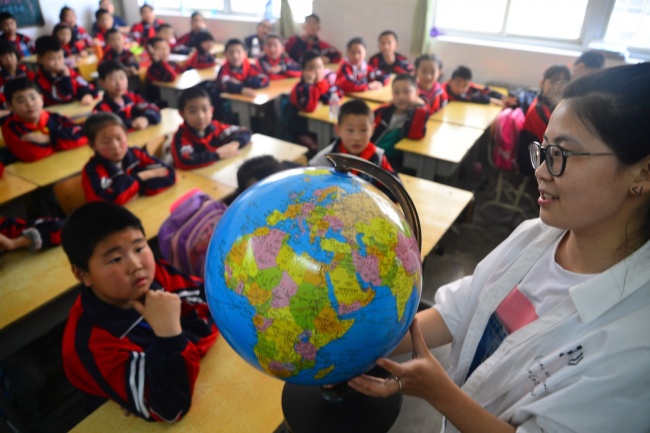The Secondary and Higher Education of Chinese Women
2 min readThe state exerts great efforts to ensure that women have the opportunity to receive secondary and higher education.As a result,the proportion of women in all types of schools at all levels has increased considerably. In 2004,the proportion of girl students in junior and senior middle schools reached 47.4 percent and 45.8 percent,respectively;the proportion of girl students in secondary vocational schools reached 51.5 percent;the number of girl students in institutions of higher learning nationwide reached 6090 000,accounting for 45.7 percent of all students in such schools andan increase of 10.3 percentage points over 1995.

The proportion of female postgraduate and doctoral students was 44.2 percent and 31.4 percent,13.6 percentage points and 15.9 percentage points higher respectively over the figures for 1995.In recent years,the Chinese government has introduced the state loan system and established state scholarships for students at institutions of higher learning, providing loans at discounted interest, scholarship and stipends to poor students (including girls) to help them complete their studies. Meanwhile, the govemment encourages enterprises, private institutions and individuals to donate to education and to help female students with financial difficulties receive education. The state attaches importance to the fostering and training of women teachers, and gives full play to their role in promoting women’s education. In 2004, the propor-tions of women teachers in junior and senior middle schools were 45.9 percent and 41.7 percent, respectively; and the proportions of ful-time women teachers in secondary vocational schools and institutions of higher learning was 46.5 percent and 42.5 percent, respectively.
For many years, the Chinese government has paid great attention to eliminating ilteracy among women, curbing emergence of new women illiterates, and preventing women from becoming illterates again. Its policy priority in this respect is to promote illteracy-elimination education for women in poor areas and areas inhabited by ethnic minorities.

Relevant government departments and the Al-China Women’s Federation have jointlylaunched the illiteracy-elimination Program among Women. In 2004, the illiteracy rate among women 15 years of age and above in urban areas was 8.2percent,a decrease of 5.7 percentage points from that of 1995; the illiteracy rate among women 15 years of age and above in rural areas was 16.9 percent,a decrease of 10.5 percentage points from that of 1995. The illiteracy rate among young and middle-aged women across the country was 4.2 percent,a drop of 5.2 percentage points from that of 1995, and the rate of decrease is higher than the rate of decrease of illiteracy among the general population.









